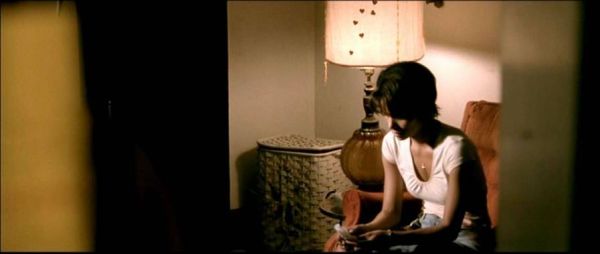Difference between revisions of "JCM312/Cinematography"
From Screenpedia
Jump to navigationJump to search (→External links: updated link) |
(added group 5) |
||
| Line 5: | Line 5: | ||
*'''Group 4:''' Explain what '''depth of field''' is -- using the textbook illustrations. | *'''Group 4:''' Explain what '''depth of field''' is -- using the textbook illustrations. | ||
**What is the difference between deep focus and deep space (as in mise-en-scene)? | **What is the difference between deep focus and deep space (as in mise-en-scene)? | ||
| − | *''' | + | *'''Groups 1 and 5:''' Explain what '''aspect ratio''' is -- using the textbook illustrations. |
| − | **Also explain letterbox and pan-and-scan. | + | **Also explain letterbox, pillarbox, and pan-and-scan. |
***Example video clips: | ***Example video clips: | ||
****[http://tvcrit.com/find/hsssletterbox ''He Said, She Said'' letterboxing] | ****[http://tvcrit.com/find/hsssletterbox ''He Said, She Said'' letterboxing] | ||
Revision as of 14:33, 30 August 2016
Color, enlarged versions of the textbook illustrations are available online.
- Group 3: Explain what focal length is -- using the textbook illustrations.
- How does a zoom in/out look different from a track in/out?
- Group 4: Explain what depth of field is -- using the textbook illustrations.
- What is the difference between deep focus and deep space (as in mise-en-scene)?
- Groups 1 and 5: Explain what aspect ratio is -- using the textbook illustrations.
- Also explain letterbox, pillarbox, and pan-and-scan.
- Example video clips:
- What are the aspect ratios of Day for Night, Shakespeare in Love and Monster's Ball?
- Also explain letterbox, pillarbox, and pan-and-scan.
- Group 2: Explain the significance of camera framing, height, and movement -- using the textbook illustrations.
- Example video clips:
- When might movement be used that does not follow a character? How is a Steadicam shot different from a handheld shot?
Cinematography and narrative
In this Monster's Ball scene, what narrative functions does the cinematography serve? Each group should account for the cinematographic aspect they explained above, paying particular attention to the third shot.
External links
- Monster's Ball scene
- Television illustrations, Chapter 8.
- Cinematography illustrations
- Monster's Ball frame grabs
- Henri 2, Paw de Deux: black-and-white
Bibliography
- Jeremy G. Butler, Television: Critical Methods and Applications, 4th Edition (New York: Routledge, 2012).
- David Bordwell and Kristin Thompson, Film Art: An Introduction (New York: McGraw-Hill).

